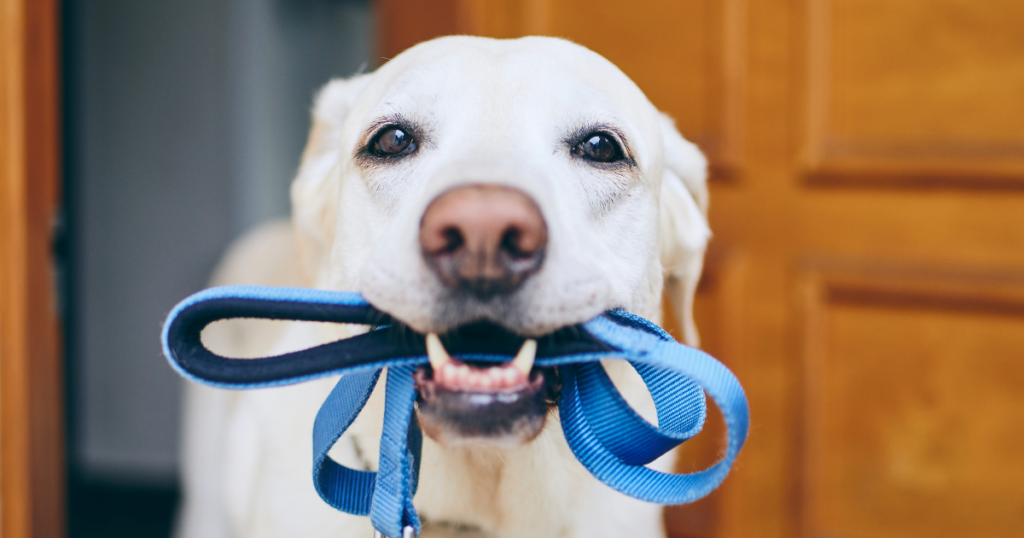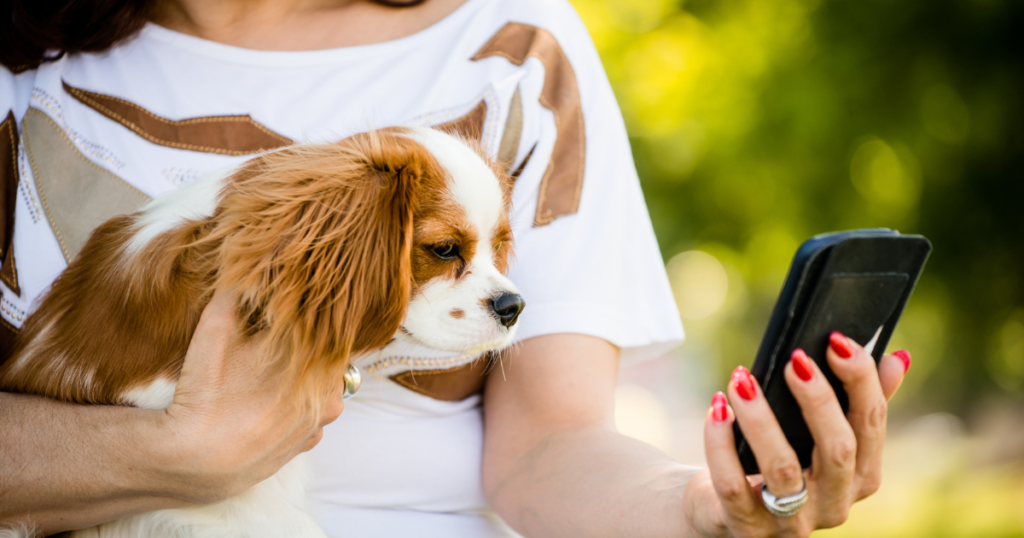Episode 3: Building Six Figure Dog Training Business with Ines McNeil
Ines McNeil is a dog training industry expert and founded the industry-leading dog training business coaching company, The Modern Dog Trainer, in 2014. She’s also on the board of directors of the Association of Professional Dog Trainers. Ines helps hundreds of professional dog trainers around the world figure out how to build a six-figure dog training business. We ask her in this episode about her journey as a new dog trainer in college and how she came to train dog trainers on how to create successful businesses around the world. Find links and a full conversation transcript below.
Listen on:
Join Ines in her Free Facebook Group: “Clients, Impact, and Profit for The Modern Dog Trainer”
Follow PocketSuite:
Follow Ines McNeil:
Join Ines in her Free Facebook Group: “Clients, Impact, and Profit for The Modern Dog Trainer”
Full Interview Transcript:
PocketSuite
Welcome to the Booked Solid Podcast. I am your host Hansa Bergwall from PocketSuite. And we have a fantastic guest for you today, Ines from Modern Dog Trainer. Thank you so much for joining us.
Ines McNeil:
Thank you for having me. I’m excited.
PocketSuite
So once again, we have another fantastic dog trainer on the show. And you’ve been in business for yourself for a long time. Can you talk a little bit about how you got started?
Ines McNeil:
Oh my goodness. Yeah, it’s a long story as it is for most dog trainers. I grew up really just loving animals. I had a neighbor, one neighbor had about 12 dogs, rescue dogs at any given time. And the other had about 30 rescue cats. So I got a lot of exposure to a lot of different animals right out the gate growing up. And that evolved into volunteering at the local shelter, noticing that behavior really was the number one reason why dogs didn’t get adopted. And I was really passionate about helping them get adopted and finding homes, especially in Texas where most shelters were kill shelters back then. So it became a very strong passion of mine.
PocketSuite
So how many years ago was that when you first hung your own shingle and got into business? And was it just directly dog training or was it something else in the pet industry?
Ines McNeil:
Yeah, I know most people started out pet sitting and I did a little bit of pet sitting for neighbors in high school. But it was really when I got into college that I started my business. You know, who doesn’t want extra money in college. And so I knew that I had some skills that I could utilize and help other pet owners through those challenging situations as a dog owner. And so I started my own business in college, which is 12 years ago at this point.
PocketSuite
Do you have any good stories from college, just being a side hustler, doing school, figuring out business as you go? I mean, I feel like that is such a crucible for so many business owners today.
Ines McNeil:
Yes, yes. I think I learned as much outside of college as I did in college. I very much was interested, that was back when kind of blogging and passive income really was becoming a thing. And so that’s really what got me started online. And starting a blog as I wanted to not only have my in-person dog training business, but share my journey. And share what I was learning alongside that on a blog. And that grew into an audience of dog trainers that also were very interested in what I was up to. And that’s evolved into helping other trainers with their business, because they were looking to me for advice and I was sharing what I was learning. And it became a really great community.
PocketSuite
Oh, wow. So was the beginning of Modern Dog Trainer? Or did you call your blog something else back then?
Ines McNeil:
My very first blog was called The Crossover Trainer. And that was where I shared my journey of with my own dog and my own experiences of going from being kind of a dominant space trainer, somebody that really used pack mentality. Just, not necessarily forceful, but very much like, “I’m the boss, you’re not”, kind of training. And I happened to adopt the one dog that it hadn’t worked for. And so I was very much in that journey of, “Well, what does work?” Because I was getting a degree in biology, very much understood science. And wanted to figure out the science of training and why things were, or were not working. So I shared my crossing over journey into positive reinforcement based training

PocketSuite
For those of our listeners who aren’t in the pet industry at all. Can you just back up a little bit and explain what the crossover journey means? There was this sort of overarching predominant way of training dogs years ago when you started.
Ines McNeil:
Yes.
PocketSuite
And you were part of a kind of revolution where a new kind has, I don’t know if it’s become the most popular kind, but it’s become a very popular kind. Which you are definitely a part of. Can you just talk a little bit about what that means?
Ines McNeil:
Yeah. So being a crossover trainer means that you started out using one method and crossed over to the other side of the fence, as we like to argue. Into a different methodology, usually a more positive reinforcement force-free type training methods. So yeah, I think that it can be a challenging journey, an intimidating journey to realize what I’ve been doing is not a best practice. To put it politely. And so you go through some emotional turmoil of like, “What have I done to my dog?” If you were a professional trainer using those methods, you did teach other owners how to do that with their dog. So you want to be passionate with yourself, realize that you did the best you could with what you knew back then. And now, you just have to move forward and do better moving forward. But it really is an interesting journey. And one that is becoming more and more rare as people start out in dog training right out the gate as positive trainers. Which is really amazing to see.
PocketSuite
Yeah. And in terms of building your business, what was the point when you were really cooking with gas? What was your level up moment?
Ines McNeil:
Several different time periods. So there’s two that I want to speak to and for two different reasons. One is the one I had with my dog training business and one is the one I had with the Modern Dog Trainer. So the first one was, when I first moved across the country, I had to move my entire dog training business. And it was a couple of months in the works, I knew it was going to be happening. And so I was proactive in updating my digital marketing presence, so that I could hit the ground running in my new state. So I moved from Texas to New York. And I made sure everything was updated on my website so that when people were searching for dog trainers, I would start showing up in New York where I was going to be. So I very much used those skills that I learned as a blogger in updating my website and optimizing my website to be found by other new clients in my new location. Which was really amazing to see.
It’s much harder nowadays to do that because of, just the quantity of trainers and businesses in general. But it’s still a very much, is an important piece of the puzzle. And then my second, I don’t know, level up journey was really when I took the Modern Dog Trainer full-time. And that came as a result of having had a baby, and I wanted to make sure that it was kind of like a make or break moment. It was either, it really grows and develops into something that can provide for my new family. Or it needs to really be set by the wayside for the next five years as I raise a toddler. So it ended up working out, and I’ve been able to help so many incredible trainers. I can’t even say across the country, it’s across the world. I’ve worked with people in Australia, New Zealand, South Africa, Europe, on top of lots of people in the US and Canada with their businesses. So it’s really been an amazing journey.
PocketSuite
Yeah. Modern Dog Trainer, you now train other trainers and what you learned how to do starting in college of creating a successful dog training business. You actually have a book, I guess it’s an ebook that you have for free on your website called 10 Common Mistakes New Dog Trainers Make With Their Business. And I was wondering if you could share a couple that you’ve seen over and over again, that might be relevant to anyone starting a new business.
Ines McNeil:

Absolutely. I think if there’s one thing you walk away with is really to start with the end in mind. And build your business to be something that you want to be running in five years. And that means having policies and structure and offers that you enjoy delivering. I see a lot of trainers, and really this goes for any small business, offering services that they don’t actually truly like offering. Maybe some trainers like group classes and others like private lessons, and you find them offering things that they don’t really fully enjoy. If you don’t like group classes, then don’t offer that. Figure out how you like to work and really give yourself permission to lean in on that. And stop forcing yourself to do things just because you see other people doing it, is very much the biggest takeaway I would love for you guys to walk away with. Really embrace who you are. And allow your business to support who you are from the get-go.
PocketSuite
We actually see that over and over again in so many different industries, that there’s just a lot more room to specialize than people really believe. And that it can help with your branding. If you’re a mobile detailer and it’s hard to do both old Honda Civics and luxury cars, you should probably pick a lane, you’ll do much better. Sort of knowing how to really specialize on one thing you do really well.
Ines McNeil:
And even with that example, like car detailer, immediately what comes to mind is, what if you specialized to be a car detailer for pet owners or dog owners? They have a different level of…
PocketSuite
That actually exists by the way. That is a specialized service [inaudible 00:10:03].
Ines McNeil:
If you like dogs and you like clean cars. Yeah.
PocketSuite
Yeah. That’s so good. What’s another one that you just see over and over again with people starting a new business?
Ines McNeil:
Oh, not taking time to do the math of what it really does cost you to offer services. Instead of looking at, these are my expenses, this is how much time I have to actually serve clients versus do admin work in my business. Which you will need time to do. People just start off by looking at, “What are my competitors doing? And I’m just going to copy what they’re doing and I’m just going to copy what their pricing is because that’s the easiest answer.” But really, you don’t know what goes on behind the scenes in their business. And you don’t know the level of quality of service that they’re giving their clients. And so your business has to start with how you want to do things. And how much money you want to make. And how much time you want to be working. And just ignore the competitors. The only people that matter are the clients that are going to be willing and able to pay you.
PocketSuite
Yeah. So what are the most common expenses people forget about to factor into their pricing? Because I know with a service-based business there’s usually a lot of them. What do you see happening often? Is it people’s time that they’re undervaluing? Is it something else?
Ines McNeil:
Yes. Yeah. Yeah, absolutely. I would say time. You just don’t realize how much time you need to be spending marketing, building structure into your business, and delivering a great experience. And I think that that’s just not really accounted for. People think they’re going to have 40 hours a week to do dog training and be training with dogs and their owners. But the reality is that you need a third of that time, at least for administrative work, for just building your business, for marketing that isn’t really accounted for. So you shouldn’t be basing your prices off of a 40-hour work week when you’re only going to be able to be actually charging for two-thirds of that time.
PocketSuite
Yeah, basically what you’re saying is that if you are doing 40 hours a week on direct to dog training, you’re actually working 60 hours a week. Because there’s a ton of other things that have to get done.
Ines McNeil:
Yes.
PocketSuite
So think about your work-life balance and price and plan accordingly.
Ines McNeil:
Yes. Exactly.
PocketSuite

That’s really good. The world has changed a lot in the last bunch of years since you were in college. What are the things that are sort of new that you think service-based businesses really have to do? Do we all need TikTok accounts, social media? What are the ones that are like, “Absolutely, yes, this is really effective. I’ve seen it over again.” And what are the ones that are like, “If you enjoy it?”
Ines McNeil:
I’ll start out by saying that I have not adopted TikTok in my business. I know a lot of people use it. I don’t even know if we’re going to be able to keep using it. I don’t know what the legislation’s going to end up doing with it, but ultimately it comes down to who are your clients and where are they, right? If they’re not on TikTok, then don’t worry about TikTok. That is irrelevant. So it really comes down to really making sure you understand your ideal clients. And you understand where they go to for help or to look for resources. And that’s one of the reasons why I love Facebook. For what we do as trainers there’s really not many other platforms that can deliver such a speedy community. If you think of yourself…
PocketSuite
Okay. So which tools do you use on Facebook? Because I know it’s a huge site with tons of marketing and advertising tools. So which ones do you use?
Ines McNeil:
We use engagement in Facebook groups.
PocketSuite
Okay.
Ines McNeil:
Yeah.
PocketSuite
You have a Facebook group.
Ines McNeil:
Yeah.
PocketSuite
Word of mouth, people get referred in and then you have a lively community. That’s how it works?
Ines McNeil:
That’s a very simplified way of putting it. But ultimately for our students, we have our students who are building their new dog training businesses, go out into the community virtually. So go out into Facebook groups and build connection, build a reputation very quickly, thanks to the internet and Facebook. The reason we love Facebook is because there’s not really another platform that offers that group functionality that you can immediately just be in the room with 500 of your neighbors.
PocketSuite
Right.
Ines McNeil:
Right? So it’s a very important tool that we like to use.
PocketSuite
It has to be so… Well, I guess nowadays there’s a lot of virtual training with dog training. But usually, traditionally it’s a very local business.
Ines McNeil:
Yeah. Yeah.
PocketSuite
Do you find with trainers that you work with that people are doing more virtual trainings with people around the country? Or is it still very local?
Ines McNeil:
So with the pandemic, when that hit, so many trainers went virtual. That was basically the only option you had to continue your business is help people virtually. And that was something I was doing back in 2014, almost 10 years ago now. I had a full virtual dog training offer and I ended up working with somebody that was in Africa back then. Because nobody else was offering virtual training back then. But nowadays, it absolutely should be on your radar. It doesn’t need to be something you are implementing like this month. But I think that it’s a great piece of the puzzle to building a sustainable and profitable business. It’s going to allow you to grow a lot faster and serve people when travel constraints are in place. And just serve a wider audience as maybe your favorite clients move away. Or you need to move somewhere else for your own family. It just gives you so much more flexibility in what you’re able to do.

PocketSuite
Really cool. Do you have any advice for anyone who is, maybe gotten to the next phase of their business? They’ve started out and they’re looking to make a couple of their first hires to grow their business.
Ines McNeil:
Yeah, yeah. I remember when I first hired. I was determined to never hire an employee ever. And now I have two of them. And it is a journey, it is a process, it’s going to be a learning experience. But when you get the right people on your team doing the right work, it’s incredible. And it frees up so much of your time for bigger picture thinking and for helping basically, taking on the work that you enjoy doing. So I would say make sure that you hire based off of your needs. Create the role and the checklist of things you need that person to do, before you go out and find the person.
What I see a lot of the times when you’re building your small business, a lot of my students end up hiring maybe another trainer they know of locally. Or they hire a friend because they really like this person. And they get into kind of a sticky situation when that person doesn’t deliver on the work that needs to get done. Or they don’t do it the right way. Or there’s just kind of personal conflict there. So take yourself seriously. Think like you were a CEO of a Fortune 500 company. And think about, “What are my needs for my business.” Because at the end of the day, it completely impacts your livelihood and your success in your business. So don’t let friendships get in the way of that.
PocketSuite
You know, you are the second Booked Solid interview in a row that has warned against that idea of, be really careful hiring friends. Because it’s a different kind of relationship to be someone’s boss and be their friend.
Ines McNeil:
Yes. Yes. And a lot of times, even with trainers that are working for a larger organization and they go from equal level trainers to now one’s been promoted to supervisor and the others stayed. Going from peer to boss is a very challenging transition for many people. So definitely be careful with that.
PocketSuite
It’s just a different kind of boundaries and what you would do with a friend who’s late. Or needs a day off last minute. And how you would treat someone working for you.
Ines McNeil:
Exactly.
PocketSuite
So it sounds like your recommendation is just immediately try to look for people who you can start fresh as a working relationship, rather than trying to transition from friendship. Because friends are valuable too, you don’t want to lose friends.
Ines McNeil:
Right, right. Exactly.
PocketSuite
Tell me about some of your programs that you offer to dog trainers.
Ines McNeil:
Oh, I’d love to. So we really have one signature program right now that’s open for enrollment and it’s the Modern Doc Trainer Academy. This is a six-month program where we deliver essentially proven strategies that have worked for many other trainers before everybody. And so no matter where they are. So it’s strategies that you can bring, come to the table, look at them, think about how they would work for you. And really plug and play for your own business and your own preferences. So we give you the formulas and then you put in your preferences, and who your ideal clients are, and what kind of behaviors you like to work on. And really embrace that for yourself. And then we give you the marketing strategy to go out and find those ideal clients, and more of them. And generate them consistently. So it’s really an amazing program. We’ve had so many amazing success stories and it’s really been able to change people’s lives for the better.
PocketSuite

Can you just define for us what an ideal client is?
Ines McNeil:
Great question. So it’s somebody that you enjoy working with. And you really want to get into just their demographics. Where are they in life, locally? What kind of house do they live in? What kind of family does their situation look like? But also get into how they think, and what they value. And why they wanted to get a dog in the first place? And really understand what they’re seeking to get out of training, so that you can create something that’s going to make sense to them. It’s not about just offering group classes or private lessons. It’s really, “What can I create that’s going to allow them to see the best results possible as quickly as possible.”
PocketSuite
Yeah. I feel like so many times people in business are just looking for any client that they forget that they really get a say in defining their ideal client. Even if you’re doing hair, you probably have an aesthetic. You know, you probably have something that you’re really good at. A price range. You could probably find out a lot of things about what is your ideal person and start relationships where those people are.
Ines McNeil:
Exactly. It makes it so much easier to know what you need to be offering and know what price point you need to be offering at. And know what to do for your marketing. Because if you’re trying to attract just anybody and everybody, I mean, you have an infinite number of options as far as how to start marketing. Right? But when you are committed and have made a decision that, “I want more of these people as clients”, then you know where they hang out. You know what they want out of hanging out with their dog. You’re able to narrow down and start answering your own questions as far as, “What should I do for marketing?” It really comes down to who do you want to attract?
PocketSuite
And I think it’s also huge for repeat clients, which a lot of service businesses live or die on. It’s like, if you find your ideal client, you don’t have to find a new client every couple of months. Because they tend to stick with you a long time.
Ines McNeil:
Right. Exactly. Yeah.
PocketSuite
Cool. So what is next for Modern Dog Trainer?
Ines McNeil:
Well, we have lots of fun things underway. We have just launched and are going to be reopening soon, our new community called the Modern Dog Trainer Collective. This is a space that we’ve been thinking about for well over six months. Because I noticed that there’s some really great dog training schools you can go to. You can go take other people’s classes, but there’s really nowhere to go to discuss really the practical application of what you learn in the classroom, or at a seminar, or at a conference. Right. You kind of take that info in and then you go into a client’s home and you try and figure out how to apply it.
But really we really want to, with this space, is host conversations that allow other trainers to connect with one another. To share what’s working right now, what hasn’t worked. “This is how I applied this certain theory to this kind of client.” So that we can start to discuss what are some best practices, to help people kind of troubleshoot challenging cases. And ultimately we also have a call in there that allows us just to chat as colleagues. That you really don’t get to do as a solo business owner and dog trainer.
PocketSuite
Yeah. It’s something that comes up again and again, is that it’s wonderful in so many ways to have a self-employed career. But you just can’t take for granted the sort of mentorship or conversations that other careers get to have with their colleagues in the office, or what have you. And so in order to really flourish though, you need to have those conversations.
Ines McNeil:
Yeah. Exactly.
PocketSuite
And find those networking communities where you can talk to other people who do what you do.
Ines McNeil:
Yeah. And usually before this, the only place you could do that was at the end of a conference. At the end of a day at a conference, you sit down to dinner with a few other trainers and you get to talking about what you learned that day. And that happens what? Once a year. So now we get to have it every week and some of the conversations that are coming out of the collective are really incredible.
PocketSuite
Can you give me an example?
Ines McNeil:
Oh, just learning. So one of the calls I was on, we were discussing what happens when a client has two dogs. And you’re really only there to work with one. You’ve been paid to work with the one dog, but the other dog who you thought wouldn’t be a problem is, because he can’t be separated without freaking out. And so we got to discuss, how would… You know, these trainers from around the world, we had somebody joined from Japan at 02:00 AM her time. How would you address that situation? How would you manage the situation so that the client is able to succeed, the dog isn’t stressed out and you’re able to deliver the service that’s been paid for. So that’s just one example of how we would apply all these theories that we know to real world situations that we’re coming across in the field.
PocketSuite
Yeah. That happens so often. Client work begins and it’s a little bit different than first described.
Ines McNeil:
Yeah. Exactly.
PocketSuite
What do you do? Okay, cool. Well, I want to give you a chance to talk about, and plug anything that you’re doing. And where people can find you, connect with Modern Dog Trainer.
Ines McNeil:
Yeah. Yeah, no, that’s great. So everything’s on our website, themoderndogtrainer.net. The last fall I published a new book called The Modern Trainers Guide… Oh my gosh, I can’t talk today. The Modern Dog Trainer’s Guide to 10K Months. And that really came out as a culmination of all of my teachings. It’s a high-level overview of what we teach our students so that you can start to grasp the process and the strategy that we teach. And implement some changes right away. And you can get the book at themoderndogtrainer.net/book. And we also have a free Facebook group that I’ll do free live trainings in and share loads of different resources. And we have great conversations in there, called Clients Impact and Profits for the Modern Dog Trainer.

PocketSuite
Very cool. And we’ve had a great relationship, or you’ve had a great relationship with PocketSuite for a while now.
Ines McNeil:
Yeah.
PocketSuite
There’s also a Modern Dog Trainer edition of PocketSuite. So if you want little updates directly onto your PocketSuite homepage, you could download that. And get ideas and tips right from Ines, who we’ve been talking to for the past half hour about building a dog training business.
Ines McNeil:
Exactly. Yeah. No, I just sent out some updates through the app this morning, so definitely grab the Modern Dog Trainer edition of PocketSuite. I’ll be continuing to update my members on there. And it also comes with some of my super secret signature programs that I have my students kind of build from. So you can either use those, grab and go. Or tweak them and make them yours.
PocketSuite
Very cool. Well, thank you so much for joining us today Ines. Actually didn’t know some of those parts of your story. So it was really cool to hear about the early days.
Ines McNeil:
Yes. Awesome.
PocketSuite
And thank you for everyone joining us today as well on the Booked Solid Podcast.








